#saitou mino
Explore tagged Tumblr posts
Text






#oficial art#jiisan baasan wakagaeru#grandpa and grandma turn young again#じいさんばあさん若返る#Jisanbasan#takahashi nagisa#@taka_hashi_n#jiisan baasan#ine#shouzou#jiisanbaasan#saitou shouzo#saitou ine#saitou mino#saitou shiori
23 notes
·
View notes
Text

Source: Grandpa & Grandma Turn Young Again [2024]
#grandpa and grandma turn young again#jiisan baasan wakagaeru#mino saitou#shouzo saitou#ine saitou#cloud nine#euphoria#ecstatic#over the moon
1 note
·
View note
Note
Hello Bailey since your doing pjsk requests may I request A platonic Minori Hanasato & GN!reader who is their childhood friend
I was thinking that More more jump was attending A big idol event with other idol groups and when they were walking around and chatting Minori just hears “IS THAT MINORI!?” And when Minori looks she just sees her childhood friend who moved away now the leader of their own idol group
A/N ~ Yay, my first PJSK request! I love this idea! Hope you enjoy!
~Stay Professional~
Minori Hanasato + ChildhoodFriend!Idol!Reader


Fandom: Project Sekai/Hatsune Miku Colorful Stage
Fanfic Type: Oneshot
Reader: Gender neutral
Relationship: Platonic
Genre: Fluff
Word Count: 831
Synopsis: While at an idol convention with your group, you ran into your childhood friend, Minori. On top of that, she’s also an idol.
Warnings: Shifts in character focus(intentional)
~Masterlists~
~More More Jump! Masterlist~

“Whoa!” The MMJ group exclaimed as they entered the convention center.
The place was huge. Many booths— decorated to match their respective idol groups— lined the walls. At the very back was a giant stage, which already had a crew working on setting everything up.
“Pretty cool, huh?” Saitou, MORE MORE JUMP!’s manager chuckled. “I just knew you couldn’t pass up this opportunity.”
The idols had received an offer to appear at an idol event a few months prior. With their goal of becoming more popular, they immediately accepted. But they didn’t realize just how big this event would be.
“Wow, so many well known idol groups are here.” Airi observed.
“I know. Isn’t it wonderful to be able to attend the same event as them?” Shizuku added.
“Oh yeah, that reminds me.” Haruka drew her attention away from the place, and to her friends. “I know it’s great to be in the same room as these other groups, but we still need to stay professional.”
“Right!” They agreed enthusiastically.
“Okay, we need to start setting up your booth. The boxes of merchandise should already be there.” Saitou said as she looked at her phone— supposedly where she was getting the information from. “The booth is over…. there.”
~~~~
As MORE MORE JUMP! got their booth ready, another idol group on the other side of the convention center was doing the same. Your idol group.
“(name), we’re almost set!” One of the members informed.
“Great, thanks!” You gave them a smile, before going back to setting out the keychains.
As you did, you heard excited murmuring from behind you. Assuming it was your teammates slacking off, you went to redirect them.
“Guys, please focus. Just because we’re almost done, doesn’t mean we get to goof off.”
“Sorry!” They all said, a bit started from being told off by their leader.
“Just try not to let it happen again.” You sighed. “What’re you so excited about anyway?”
“Haven’t you heard? MORE MORE JUMP!’s gonna be here too!” One of the members said, bouncing a little bit from pent up emotions.
“Who?” You gave a clueless look, before resuming setting up the booth.
“Wait, you’ve never heard of them? How? They’re trending like crazy right now!” Another member said in disbelief.
“No, I haven’t been following idol news lately.” As you said that, you completed your task, now able to put your full attention on your team. “There, done. Now, who’re the members?”
“That’s the cool thing. Most of them are formerly retired idols! They have Shizuku Hinomori, Airi Momoi and Haruka Kiritani!” Some of them squealed— fangirling over the mentioned people.
“Oh wow, they have Kiritani? I didn’t expect to see her back in the idol business.” You smiled.
“Yeah, me neither. It’s apparently because of the newbie of the group. What’s her name? Oh yeah, it’s Mino-“
Suddenly, a loud voice spoke up from the stage. “Attention idols! You have about ten minutes before the event starts! So make sure you’re all ready!”
After the announcement, everyone started rushing to finish up their tasks. With your attention changed, you inevitably forgot about the last member of MMJ.
“Alright guys, get ready! Make sure your outfits and makeup are set!”
Everyone started exclaiming excitedly, while checking each other for any wardrobe mistakes.
“Okay, I know you’re excited, but remember, we need to stay professional. Not only in front of fans, but other idols too. So I don’t wanna see any of that in front of others.”
The other members agreed, not wanting to potentially ruin their image. So while they wanted nothing more than to geek out about their favorite idols, they vowed to keep their cool.
A few minutes later, the event finally began.
~~~~
(Time Skip)
Minori and the rest of MMJ were easily one of the most popular groups there! The lines for their merchandise and meet and greet were so long, they started to invade the lines for other idol groups. Everything sold out much quicker than they anticipated as well.
Now, it was their break time, so they got time to recharge.
“It was so crowded! I didn’t expect so many people to come see us!” Minori said happily.
“Yeah, especially since there are so many other popular idol groups here. Guess that’s good news though. It means we’re one step closer to becoming top idols!” Airi added.
“Yeah, it’s definitely something to be proud of.” Haruka said. “Now, we should probably head back out there.”
Everyone nodded, and got up from their seats. They made their way out of the back, and into the main room.
Coincidently, you were just passing by the door they came out of.
“Minori?!”
The girl herself turned to the direction she was called from. Expecting it to be a fan, she put on her idol smile, but it immediately dropped in shock the moment she saw your face.
“(name)?!” She could only stand there as you bolted towards her.
“Minori! It’s really you!” You cheered, enveloping her in a tight hug.
“(name)! I can’t believe it! I missed you so much!” She hugged back, bouncing slightly from the excitement.
“Minori, you know them?” Airi asked her.
“Yeah! We were friends back in middle school! I haven’t seen her since she moved away!” She explained.
It was then that you realized who else was with Minori. “Wait, Momoi? And Kiritani? And Hinomori? You’re that ‘MORE MORE JUMP!’ group. Wait, so that means…” You stepped back, getting a full view of all the girls. “Minori, you’re a member?!”
Having finally gotten over the initial shock, she spoke up. “Yeah! I did it (name)! I’m an idol!” She clasped your hands in hers.
“That’s great! I’m so happy for you!”
“You’re (full name), right?” Haruka asked you. “The leader of (idol group name)?”
“Yup! That’s me!” You replied, and gave her a cute, sparkly smile.
“I was wondering what you’re doing here! You’re an idol too?!” Minori exclaimed.
“Yeah! Isn’t it great? We’re both idols!” You hugged her again.
“Yeah!” She hugged back tightly. You both relished in the feeling of having your childhood friend back.
“So, this might be a weird thing to ask…” You said after pulling away. “but can I get your autograph?” You quickly pulled out a pen and paper from your pocket.
“R-really?! You want mine?!” Minori stuttered bashfully.
“Of course I do! I can’t pass up the opportunity to get my friend’s signature!”
“Okay! Can I have yours too?” She asked— grabbing the pen, and popping the cap off.
“Of course!”
~~~~
At that point, your own group had found you, and overheard the conversation. Their leader— who had been strict about staying professional— was excitedly hugging and exchanging autographs with another idol.
They met up with MMJ, and waited with them for their members to finish up their mini meet and greet.
“Isn’t that ironic…” One of your teammates chuckled. “Little Mx. ‘Stay Professional’ themself— all over Hanasato.”
“I say let them have their fun. I mean, this is their reunion after all.” Airi giggled.
“I still can’t believe (name) didn’t know about MMJ beforehand. But hey, I guess it gave them a surprise.” Another member added.
Everyone nodded in agreement, watching you and Minori’s adorable interaction. One that was the last thing either of you expected to happen. But you both knew this event was a great opportunity. So you were grateful that it let you reunite with your childhood friend.

Dividers by @dollywons
~~baileypie-writes
#baileypie-writes#project sekai#project sekai + reader#project sekai + gn reader#pjsk#pjsk + reader#pjsk + gn reader#hatsune miku colorful stage#hatsune miku colorful stage + reader#hatsune miku colorful stage + gn reader#minori hanasato#minori hanasato + reader#minori hanasato + gn reader
8 notes
·
View notes
Text
In “defense” of the Enryakuji invasion
This is the clash of two military and political powers that finally came to a head, not a one-sided oppression
When people cite the invasion of Enryakuji to accuse Nobunaga of all sorts of horrible things, it’s usually because they were under the impression that an unreasonably large number of people were killed, or that it was an oppressive massacre against a community that weren’t posing a threat.
It’s very unfortunate that it’s very rarely clearly explained to the general public that Enryakuji has armed forces. In a lot of ways it’s almost functioning like a samurai lord’s castle, inhabited by both warriors and civilians alike. They also had massive political power and influence. They’re not a quiet little temple whose inhabitants were peaceful or helpless.
The warrior monks of Enryakuji themselves have committed massacres and invasions. They do not accept other sects rivalling them, either out of genuine religious zealotry and considering the other sects “heretics”, or because they simply want to maintain their sect’s influence and authority in Kyoto. They were not politically neutral, nor were they pacifists.

(A Cultural History of Japanese Buddhism, page 178)
I emphasise the part where it says the Enryakuji warriors wrecked Kyoto so badly, it’s equal to -- or even worse than -- the destruction in Kyoto when the Onin War broke out. These monks are vicious and violent.
They were still meddling in politics and battle in Nobunaga’s time. During Nobunaga’s battles with the Azai and Asakura, these monks joined in the forces opposing Nobunaga. They took part in besieging Usayama Castle, which resulted in the death of one of Nobunaga’s brothers and some other senior vassals.
The killing of thousands of combatants and civilians alike regularly happens when any one lord invades another territory. There are no stipulations to spare civilians. If a lord decided to evacuate civilians first before the invasion, then it is a benevolent act. Otherwise, civilian casualties is just a fact of life in that time period.
In which case, how is Nobunaga’s invasion any different than, say, the occasion where Nobunaga invaded Mino and conquered the Saitou? That's rarely, if ever at all, cited that as an example of cruelty. That was just a battle.
There is no reason to be especially horrified about this Enryakuji incident above any other battle or invasion. This is nothing about this battle that more morally outrageous than what every samurai commander regularly do when engaging another samurai in battle.
I would grant that many people may think that any mass-death is automatically horrible, and perhaps no amount of reasoning and justification can make the Hieizan invasion and burning defensible. There is no denying that thousands of people were killed in Enryakuji. It’s fine if one were to still condemn this even after knowing the circumstances. Still, knowing and understanding the context matters.
The Hieizan situation only looks different than a regular castle invasion because Enryakuji has the facade and still does operate as a temple. There is something about religious sites that inherently invokes the image of sacredness after all, regardless of the faith, and the general public tends to view them differently than a regular fortress or castle.
It is true that there were contemporary Sengoku writers who severely criticised Nobunaga for his actions. However, for the Japanese at the time, Enryakuji is a holy site with immensely deep cultural and spiritual significance. Not just the temple, but the whole mountain itself. No matter how justified Nobunaga was, or even if nobody was killed, people were going to be up in arms about it simply for the fact that Hieizan was targeted.
Think of the time when the Notre Dame caught on fire. People from all over the world were horrified. Imagine how much worse would it be if, say, there’s a fire in the Vatican. That’s what it was like for the people there at the time.
On top of that, the chief priest of Enryakuji also happens to be the emperor’s brother. This invasion can be perceived to be disrespectful to the imperial court. It only worsens the uproar surrounding this situation, which then supposedly led to the dramatic letter where Nobunaga calls himself the Dairokuten Maou in a spiteful reply to Shingen’s letter rebuking him in the name of the chief priest.
An additional point in the “defense” is the numbers. For some reason there is a claim that 20 thousand were killed in the Enryakuji invasion. I have yet to find the exact source of this information. Wikipedia and other online articles cite Stephen Turnbull’s book, but I cannot find corroboration for this claim in the original historical documents.
Shinchoukouki said "many thousands” and did not specify a number, and Luis Frois recorded that he was told around 3000 were killed (about 1500 combatants, and 1500 civilians).
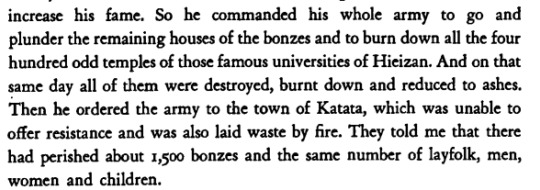
(They Came to Japan: An Anthology of European Reports on Japan, 1543-1640, page 99)
The claim of 20 thousand people killed also does not make sense as, supposedly, there weren’t even 10 thousand people inhabiting the Enryakuji complex in Hieizan at the time. How can the dead amount to more than double the actual number of inhabitants?
Lastly, there’s also reports from on-site research that claims that, as of 1980s, they weren’t able to find “proof” of massacre or mass-burning. They have yet to find the human remains of the dead, nor expansive traces of burning in the soil. The burning traces that was discovered were very minimal, compared to the narrative of “the whole mountain was up in flames”. On top of that, there were existing textual records describing many of the buildings were already dilapidated and abandoned as of 1570, and so even if they were burnt, there were no casualty or major losses.
However, this is a decades old report and I haven’t seen any certified updates on this yet. To be able to make a definitive claim, they would have to conduct a scan of the whole mountain, which is difficult to do.
#japanese history#enryakuji#enryaku-ji#hieizan#hiei-zan#mount hiei#mt hiei#oda nobunaga#sengoku#Sengoku period#Sengoku Era#Warring states#Warring States Era#Warring States Period#nobunaga oda#samurai
16 notes
·
View notes
Text
Grandpa And Grandma Turn Young Again Episode 3 Review - The Darn Hourglass
The main villain of the story is that darn hourglass. It has the power to change the grandparents from young to old and the reverse. Given that Shouzou gets conflicted when he reverts back to his original elderly self and gets insecure over it, it really is the antagonist of the story. It also pegs the question: why is it there? What purpose does it have for the Saitou couple? Did eating the golden apple curse or bless them?

The first half of the episode is just cuteness from the grandparents featuring Shiori and Mino. Shiori brings in a PS3 as Takahiro stated that it could help prevent dementia. Shouzou and Ine play a game for the first time and while they question game logic like NPC dialogue and looting items from people’s homes without consequences, they eventually get hooked into the zombie game, Rice Field Hazard III, and earn all the trophies in a day. Damn, they just beat the crap out of all the existing speed runners out there. The Shiori and Mino moments were cute too. Shiori and Mino are cousins, and it’s obvious that their personalities are very different with Mino being energetic and Shiori being a tsundere.
The latter half of the episode actually drills into some harsh facts about the couple. When the couple go to Takahiro for a check-up due to Shouzou reverting back to his original self, it turns out that Shouzou and Ine are getting healthier due to their newfound youth. Shouzou’s health is surprisingly great for his age and Ine’s current self has it so that she has the body and energy of a woman in her twenties. This causes Ine to realize something. If she stays this way, that means she could live another seventy years, but if she does so, everyone in her family would die before her, even Mino and Shiori. It’s obvious that Ine is terrified and does not want immortality. Shouzou reassures her that they won’t outlive them and that they would revert back to normal soon. It really hits home how some people perceive immortality. Some desire it, while others like Ine fear it. It would make sense to fear it because if everyone around you dies, you’ll be all alone; you’d probably go “well, I’ll make new friends”, but they’ll die too and if society changes during your immortality, would you accept these changes?
Another rather somber moment of this episode is Ine’s flashback of the time she moved to the countryside during WWII. Her parents passed away, so she had to move in with her maternal relatives. Before moving, she was attending a school in Tokyo for young ladies, meaning that her family was rather wealthy. While she had a hard time adjusting to country life, meeting Shouzou melted her cold heart and that’s how she mellowed from her stern and tsundere self to her loving self.
With these somber scenes, I just can’t help but worry about a sad ending for these two. The manga for this story have chapters that are only 5 pages long, so they’re practically grouping a bunch of them together to make one episode. I’ve marathoned the ones they have so far and it makes me wonder if the current arc will be animated or if they’ll deviate and make an anime original ending. What are your thoughts on this episode?
#grandpa and grandma turn young again#jiisan baasan wakagaeru#Shouzou saito#ine saito#mino saito#Shiori saito#Takahiro saito#review#anime#anime review#ecargmura#arum journal
3 notes
·
View notes
Text

Saitou Mino ❤️
Anime: Jiisan Baasan Wakagaeru
1 note
·
View note
Text
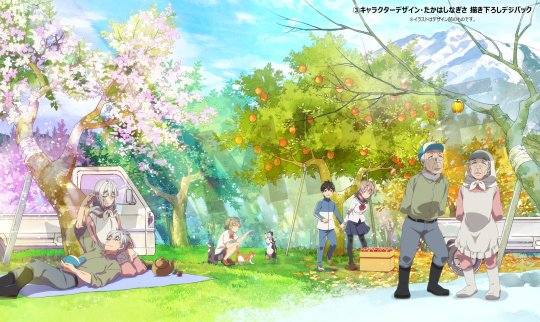


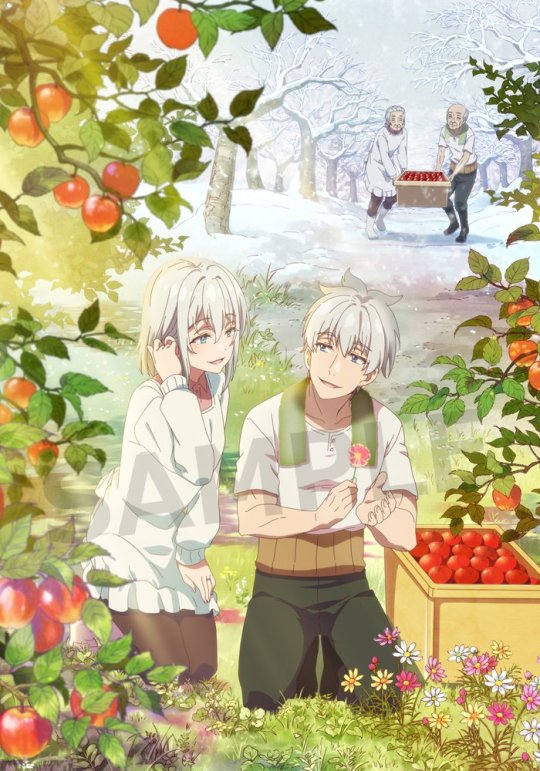

#oficial art#じいさんばあさん若返る#jisanbasan#jiisan baasan wakagaeru#jiisan baasan#ine#shouzou#grandpa and grandma turn young again#jiisanbaasan#saitou ine#saitou shouzo#saitou mino#saitou shiori#igarashi shouta
12 notes
·
View notes
Text
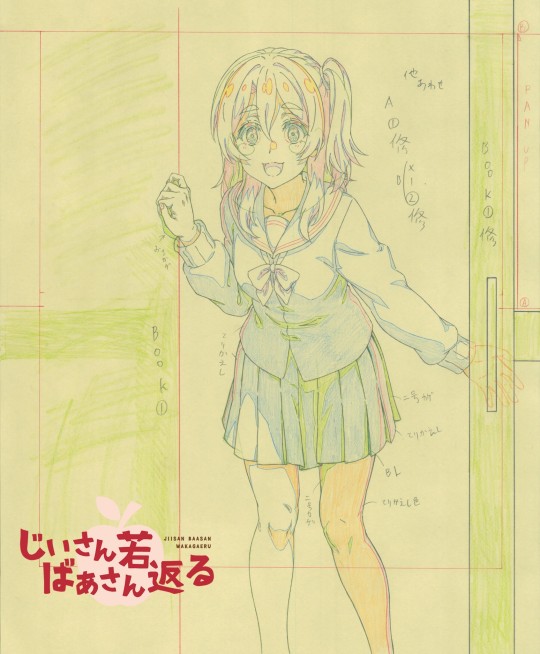
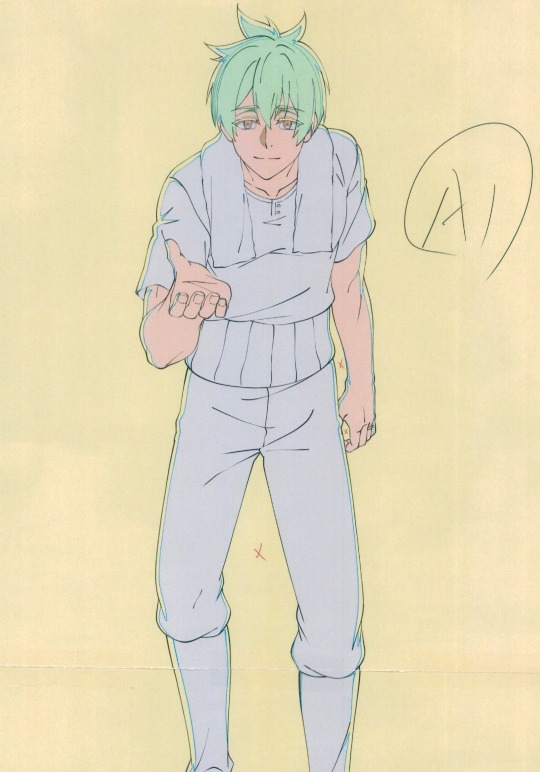
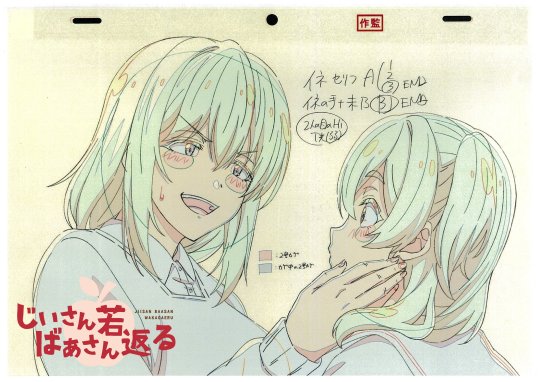

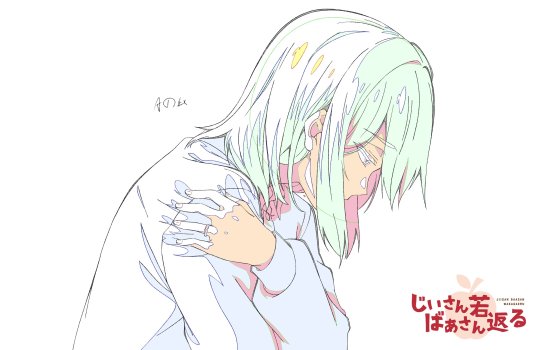

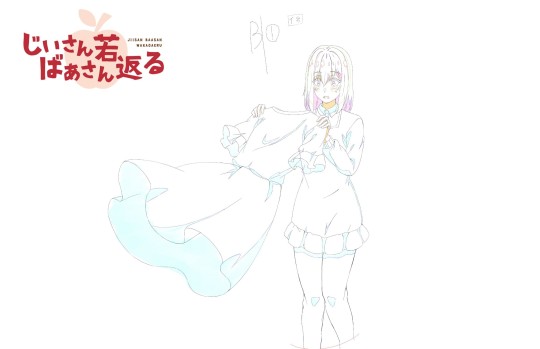

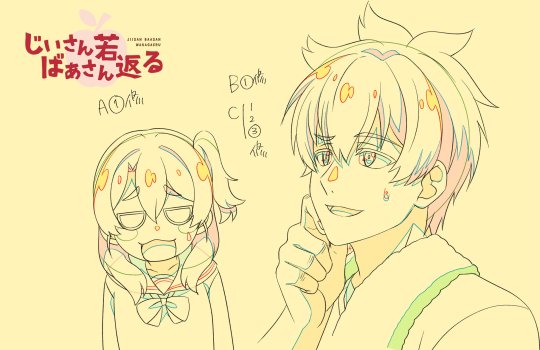

#oficial art#jiisanbaasan#jiisan baasan#jiisan baasan wakagaeru#grandpa and grandma turn young again#ine#shouzou#じいさんばあさん若返る#Jisanbasan#takahashi nagisa#@taka hashi n#saitou shiori#saitou mino#saitou shouzo#saitou ine
10 notes
·
View notes
Text

#oficial art#じいさんばあさん若返る#jisanbasan#jiisan baasan wakagaeru#jiisanbaasan#jiisan baasan#granpa and grandma turn young again#jisan basan#ine#shouzou#saitou shouzo#saitou mino#saitou shiori#saitou ine#igarashi shouta
11 notes
·
View notes
Text
Grandpa And Grandma Turn Young Again Episode 4 Review - Surprise Foreshadowing
This show is always adorable and this one is no exception. Shota really has the perfect grandson/son-in-law vibes. He helps his grandfather with cleaning and even calls people for him and talks to them so professionally. He is destined to succeed wherever he goes. Ine and Kaede shipped him and Mino in the beginning and now Shouzou is shipping them too. To be honest, if I was in their position and saw how much of a catch Shota is, I definitely would try to pester my grandchild to get together with him. Shouzou wants them to get together so much that he even played wingman towards the end. You know you are family-approved when even the grandparents want you.

I’m glad that Mino and Shota have more romance development. I feel like ever since Episode 1 aired, Mino has been flagged as the incest girl for presumably having a crush on younger Shouzou, her grandfather, despite showing that she has a crush on Shota in the same episode. Since these two are the only ones who know about Shouzou and Ine’s weird age bending powers, they often meet up together in private to discuss about various things.
The culture festival portion was so cute. It’s nice that the Saitou couple had an experience that they never had. They even got to role-play as students. Shouzou, as mentioned in the Shiori segment of the episode, never pursued a higher education due to the lack of money. In actuality, Shouzou really did want to continue his studies. However, telling Ine that he had no regrets not continuing school because he got something even better at the end was super sweet. Life really is full of unexpectedness and that taking one path will always result in something you will never expect. For Ine, she was able to return to school briefly as she had to stop going to school due to the war and the death of her parents. The fact that she was able to revert back to her past self was surprising, but it makes sense given that her new youthfulness also helps with her memories. However, that was total foreshadowing and I applaud the writers for doing that.
Wow, that ending surprised me. I actually read the manga after watching the first episode and what happened with Ine is actually what’s going on in the current chapters. I can’t believe they’re jumping onto an on-going storyline this soon. How will this play out? Can the glitched out hourglass be restored? How will Ine return back to her normal self? This is going to be a very tough case for Saizou to crack as he’s essentially reverted back to the day he first met her when she was cold and aloof. What are your thoughts on this episode?
#jiisan baasan wakagaeru#grandpa and grandma turn young again#ine saito#shouzou saito#mino saito#shouta igarashi#review#anime#anime review#ecargmura#arum journal
0 notes
Text
Saitou Dousan’s will, ceding Mino province to Nobunaga before his death

There exist this document that was supposedly written by Saitou Dousan, giving the lordship of Mino province to Nobunaga before his death. A copy is preserved in Myoukakuji in Kyoto, and another in the Osaka Castle Museum. There is a third source, purporting to be a copy of the will, that is recorded in a text called Gonouki 江濃記, the chronicles of goings-on in Mino and Oumi in the Sengoku period.
What makes things sketchy is that apparently the contents of the letters differ from one another, and the writing style looks “wrong”. Of course, there’s a possibility that Dousan wrote 3 wills, and customised each letter instead of just rewriting the same text 3 times. As for the writing, it’s also possible that the original deteriorated, and subsequent generations copied it down for preservation.
However, it’s undeniable that documents where the handwriting is “strange” are things to be suspicious about. Case in point, the Bukouyawa, which according to the Ikoma family is a certified fraud.
The summary of the will is to hand over the ownership of Mino to Nobunaga (thus giving Nobunaga the justification to attack Saitou Yoshitatsu), and also advising “Kankurou” (supposedly Dousan’s youngest son) to enter priesthood in Myoukakuji. Indeed, the 19th head priest in Myoukakuji, Reverend Nichijou 日饒上人 was rumoured to be this very same Kankurou.
Considering how Nobunaga’s favourite lodging in Kyoto is Myoukakuji, which he used more often than Honnouji, some people thought there might be some merit to this story.
#Saito Dosan#artifact#letter#saitou dousan#saito dousan#oda nobunaga#mino province#myoukakuji#myokakuji#sengoku#Sengoku Era#Sengoku period#samurai
5 notes
·
View notes
Text
Possible proof of Nouhime’s death
An official Gifu city newsletter from 2017 reported that Reverend Kaisen’s Dharma 快川和尚法語 recorded of an individual named Setsukei Soubai (?) Daizenjouni 雪渓宗梅大禅定尼, who was the beloved of “Kiyou Taishu” 岐陽太守, died on the 25th of the 12th month of the first year of Tenshou (26 January 1574). The same text also recorded that the Reverend Kaisen (Kaisen Jouki 快川紹喜) presided over the same woman’s memorial one month later (the first month of Tenshou 2, or January-February 1574).
Kiyou Taishu, or “lord of Gifu” (Kiyou 岐陽 is supposedly another name for Gifu), would be Nobunaga. Some researchers speculate that this “beloved” is Nouhime. The arguments to support this theory is as follows:
1) Kaisen Jouki was formerly a monk from Mino who was closely associated with the Saitou family. He had apparently been the monk who performed the funeral for Saitou Yoshitatsu, Nouhime’s brother. Reverend Kaisen performed this memorial for the mysterious Setsukei Soubai when he was already serving the Takeda family, conducting it in the very same temple where Shingen’s funeral was held. Considering his former ties with the Saitou, if this woman was indeed Nouhime, perhaps it’s why he was moved to go out of his way to perform this memorial despite already serving another master.
2) In connection to the above, Oda Nobutada supposedly changed his name around the same time as this memorial. There were two documents he issued, both dated to be from the first month of Tenshou 2, but one was signed “Nobushige” (his original genpuku name) and the other one signed “Nobutada”. Seishuu Gunki recorded that Nobutada was formally adopted by Nouhime to confirm his position as Nobunaga’s heir. Since he changed his name around 1 month after the supposed death of Setsukei Soubai, perhaps he was observing the 49 days of mourning of his “mother” before changing his name.
3) There was an account in the Kensai manuscript 謙斎稿 that said Nobunaga had commissioned an epitaph from Sakugen Shuuryou ���彦周良 to be written on portraits of a woman. This is also dated to the first month of Tenshou 2.
4) Supposing that Setsukei Soubai is indeed Nouhime, it does fit with the timeline supplied by other anecdotes. There was an anecdote where Nouhime argued with Nobunaga when he demanded for Saitou clan’s treasures after Saitou Tatsuoki’s defeat in 1573 Edit: I mis-remembered the anecdote. This was recorded in Yamashina Tokitsugu’s diary (Tokitsugu-kyou Ki 言継卿記) in the 27th of the 7th month of Eiroku 12 (18 September 1569). Luis Frois also wrote that the “queen” (Nobunaga’s wife) is still alive when he visited Gifu in 1573.
There some people disagree and suggest that maybe this is actually Nobunaga’s daughter who was previously unknown, or perhaps there was another consort from Mino. There was an anecdote where Nobunaga requested the Saitou family to take a Baba-dono as his consort after Nouhime died somewhere in the 1560s, but was rejected because Baba-dono is Nouhime’s niece (she was Yoshitatsu’s daughter) and this is an “awkward situation”. Maybe there was some truth to this anecdote and another Saitou woman did eventually become Nobunaga’s consort.
12 notes
·
View notes
Text
The Sengoku Christmas Truce
There is a strange story floating around on the internet that says something like this: “In 1567 or 1568, Nobunaga and Matsunaga Hisahide were locked in battle. However, on Christmas they agreed to have a truce, and their vassals attended a Mass led by Luis Frois.”
This was also repeated in some English articles, claiming that the commander leading the Oda army was Shibata Katsuie.
After looking into this, it looks like this might be a story that got distorted through “game of telephone”. The quote from Frois’s Historia that I can find mentions no names (perhaps he was not familiar with them), but Japanese experts identified this as something happening around 1565-1566, and was between Matsunaga and the Miyoshi clan.
I had originally thought that there were two Christmas incidents, but that’s not the case. In 1565-1566 Nobunaga is still tied up fighting the Saitou of Mino, and in 1567-1568 Nobunaga was cooperating with Matsunaga in supporting Ashikaga Yoshiaki’s ascension as shogun. Something got messed up somewhere, and I’m not even sure how the English-speaking writer got ahold of the wrong narrative. Perhaps it was an erroneous narrative from older English text such as James Murdoch’s Japanese History texts.
Translation from the Japanese translation (thus, take it with a grain of salt):
At the time of the Nativity, there were two armies which were hostile to each other in Sakai. There were a large number of Christian warriors among them. As it were, the Christians desired to show the pagans how close they were and how much they loved each other [as fellow believers]. Because the church was very small, they requested the people of the town to rent a large room, which was used by the locals as a meeting place. The room was decorated for the Nativity and the whole community gathered there on Holy Night.
Here they confessed their sins, celebrated Mass, heard the sermon, and those who were already baptized received the Eucharist. Among them were 70 warriors, who supported each other with great affection and courtesy, as if they were vassals of the same lord, even though they came from opposing troops. They brought many dishes from their own homes and invited one another, all in order, clean and marvelous.
The men who served them, the sons of these warriors, spent the whole afternoon talking about God and singing. The pagans of the city who came to see the altar and all its decorations were so numerous that they seemed ready to break down the doors to enter it.
Original Japanese, taken from a church flyer that quoted from the Japanese translation of Frois’s Historia:
降誕祭になった時、折から堺の市(まち)には敵 対する2つの軍勢がおり、その中には大勢のキリシ タンの武士たちが見受けられた。ところでキリシタ ン達は自分達がどれほど中が良く愛し合っているか を異教徒たちによりよくしめそうとして、司祭館は 非常に小さかったので、そこの町内の人々に、住民 が会合所に充てていた大広間を賃借りしたいともう しでた。その部屋は降誕祭にふさわしく飾られ、聖 夜には一同がそこに参集した。 そこでかれらは告白し、ミサに与かり、説教を聞 き、準備が出来ていた人々は聖体を拝領し正午には 一同は正装して戻ってきた。その中には70名の武 士がおり、互いに敵対する軍勢から来ていたにもか かわらず、あたかも同一の国守の家臣であるかのよ うに、お互いに大いなる愛情と礼節をもって応援し た。彼らは自分自身の家から多くの料理を持参させ て違いに招きあったが、すべては生前としており、 清潔であって、驚嘆に値した。その際給仕したのは、 それらの武士の子息で、デウスのことについて、よ き会話を交えたり、歌を歌ってその日の午後を通じ て過ごした。
The church staff who wrote this got it right, and even wrote a note: “Some people thought Nobunaga was involved somehow, but it was not so. It was actually Matsunaga and Miyoshi.”
#oda nobunaga#matsunaga hisahide#miyoshi triumvirate#luis frois#historia de japam#Christmas#Christianity#Sengoku Fake News
6 notes
·
View notes
Text
Samurai Warriors 5 Unique NPC reveals

So apparently Koei is persisting in using the Nobuyuki name, while a lot of “newer” media went with the trend of acknowledging “Nobukatsu” as the correct name for Nobunaga’s brother.

Saitou Dousan and Saitou Yoshitatsu in dispute.

Nobunaga left Mitsuhide and Hideyoshi to take care of Yoshiaki while he returns to Mino. Alas, they do not seem to have a Unique NPC design for Niwa Nagahide just yet. Or perhaps he is just not shown on-screen because there is no space. During this time in history, the people assigned to manage the affairs of the capital indeed included Mitsuhide and Hideyoshi, but Niwa Nagahide was also part of the group.

The cutscene shows Yoshiaki offering Nobunaga the position of Deputy Shogun, but Nobunaga refused.
#samurai warriors#samurai warriors 5#koei#koei tecmo#sengoku musou#sengoku musou 5#ashikaga yoshiaki#oda nobuyuki#oda kanjuurou nobukatsu#saitou dousan#saitou yoshitatsu
18 notes
·
View notes
Text
Inokuchi, Inabayama, Gifu
I skimmed the early chapters of the Shinchoukouki to cross-reference the Nobuhide material in the manga snippet I translated the other day. I discovered that Saitou Dousan’s castle was referred to “Inokuchi” (井口 or 井之口), not Inabayama 稲葉山. Apparently Inabayama, literally meaning “Inaba mountain” is also called “Inokuchi mountain”.
I would assume that both Inokuchi Castle and Inabayama Castle just means “Castle located on [x] Mountain”, however, while the text says the castle is “Inokuchi Castle”, the mountain is indeed called “Inaba”. This makes me curious if other texts refer to the castle and/or the mountain differently.
I was only able to find that the name Mount Inaba itself is based on the patron deity of Inaba Shrine 伊奈波神社, Inishiki-Irihiko-no-mikoto 五十瓊敷入彦命. The deity was originally residing in Inaba province, but moved to Mino, and the shrine was named after the deity’s origins. I’m not clear on the origin of the “Inokuchi” name.
The Shinchoukouki only says “Nobunaga renamed Inokuchi to Gifu”. The Gifu city official website cites a more expanded story from the Azuchi Sōgyō-roku 安土創業録, compiled in 1758. The story says that the name Gifu came from the suggestion of monk Takugen 沢彦 (also known as Takugen Sō’ōn 沢彦宗恩), who had been Nobunaga’s childhood tutor and later his adviser.
Takugen gave Nobunaga three names to choose from: Gizan 岐山, Giyō 岐陽, and Gifu 岐阜. All three names are based on the Chinese district of Qíshān 岐山 (the same as Gizan above), where King Wen of Zhou was born. Takugen reason was that “From Qishan King Wen rose up and ruled the nation”. While King Wen didn’t really conquer the previous ruling dynasty Shang, he was still revered as the founder of the Zhou dynasty throughout the history.
As an aside, there’s a legend cited in some posts, which is interesting, but frustratingly I wasn’t able to find the source of this quote either: 殷が周の王朝へと移り変わる時に鳳凰が舞い降りた山とされ、周の文王はこの山で立ち上がり、八百年の太平の基を築いた. The translation is something like, “Back in the days when the dynasty transitioned from Shang to Zhou, the Fenghuang descended from the mountains, and King Wen of Zhou rose up, establishing the foundation for 800 years of peace”. The posts credits Wikipedia, but it looks like it has since been deleted, because there’s nothing on there.
The “fu”阜 was said to originate from Qūfù 曲阜, where Confucius was born. There’s no real explanation for this. Perhaps it means nothing, as “fu” literally just means “a hill”, and maybe it was just meant to be a synonym of 山.
Incidentally, while searching for the Fenghuang legend quote I found someone citing it in a reply to a Yahoo ask that asked “In the anime Nobuna’s Ambition, the name [Gifu] was actually based on 義父 (also pronounced gifu, meaning “father-in-law” or “adopted father”) which refers to Saitou Dousan. Was there ever such a theory, or was that artistic liberty by the author?”
I’ve never heard of this before, and searching on Google turns up absolutely nothing. Unless this is just an obscure narrative that is buried in books and not online, it looks like it’s artistic liberty? Still, there’s the question whether 義父 is even a term known in that time period at all. If it’s a word coined much later, or even modern, then the theory has low credibility even if it really did exist.
1 note
·
View note
Text
Assassination attempt in Kyoto
There’s a few Nobunaga stories that’s not well known in English circles because the details are not easily accessible, and it didn’t really occur to me to share, but recently a few popular adaptations of Nobunaga’s youth mentioned it, so it might be of interest to people.
In 1558, the Shinchoukouki records that Nobunaga sent Shiba Yoshikane (the actual governor of Owari) to exile for conspiring with a lord Kira from Mikawa to bring in “Suruga troops”. This is probably Imagawa troops, as Suruga is Imagawa domain, and Mikawa is under Imagawa at this point. Nobunaga accused Shiba of treachery for this and exiled him.

[made reference in Kochouki, although in the anime the accomplices of this “treason” has been replaced with the Saitou instead of Imagawa supporters]
The year after, 1559, Nobunaga went to Kyoto to meet with the shogun Yoshiteru. The Shinchoukouki does not speak in detail as to why, and I’m not sure if there are more details provided elsewhere, but presently in the general public there are two opinions as to why the visit was made. Opinion 1 says that the reason for this was to request for official grant from the shogunate to be recognized as new legitimate ruler of the Owari province [source]. Opinion 2 says that there’s problems in the shogunate offices, and Nobunaga went there to appease the shogun. Shogun Yoshiteru has long fought for his own authority, and not be made puppet by other daimyo, so Nobunaga went to meet Yoshiteru to settle whatever issue may have arose from the exiling of Shiba. This opinion is supported by the fact that Uesugi Kenshin also went to meet the shogun the same year. [source]

[This meeting is referenced in Nobunaga’s Concerto, but the assassination wasn’t mentioned here]
Nobunaga had remained in Kyoto for a while after his meeting with the shogun, At this point, assassins from Mino came after Nobunaga. Shinchoukouki described that, as luck would have it, an Oda vassal by the name of Niwa Hyouzou (not related to Niwa Nagahide) happens to be on the same boat with these assassins. Seeing that they were suspicious, he pretended to be someone from Mikawa and followed them around while asking questions.
After affirming that they were intending to kill Nobunaga, Niwa marked the house they were staying at and went to find Nobunaga to report the assassins. Once Nobunaga and his men got all the story from Niwa, they decided to... go ahead and "pick up” the assassins. Niwa directed Nobunaga’s attendants to the place he marked, and they very nicely invited the assassins to come see Nobunaga. So the would-be assassins were then brought out to Nobunaga, who then went and mocked their failed plot in the public streets where everyone can see.
Who knows how much of this is true, since Ota Gyuuichi does get a bit dramatic sometimes. While there’s other corroborating materials I only have the Shinchoukouki.


[Interesting allusion made in Kochouki: In the anime, the assassins were presented as pretending to be the shogun’s officials who faked a summon to Nobunaga. This seems to be based on the part in Shinchoukouki where Niwa overheard the assassins saying, “If only the shogun will act decisively and give the proper instructions to the people in Nobunaga’s lodgings, it will be no problem at all to shoot him down with our harquebuses”. We have no idea what this actually meant, but it does sound like the shogun at the very least has mixed feelings about Nobunaga]
#oda nobunaga#pop culture#anime#manga#kochouki wakaki nobunaga#nobunaga concerto#nobunaga kyousoukyoku#anonymous
5 notes
·
View notes